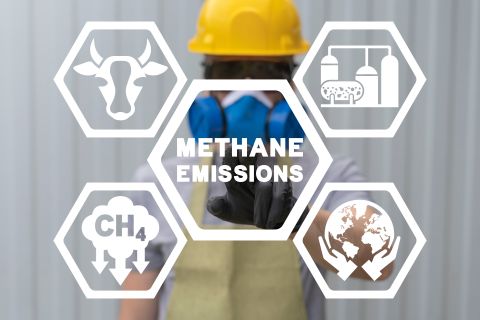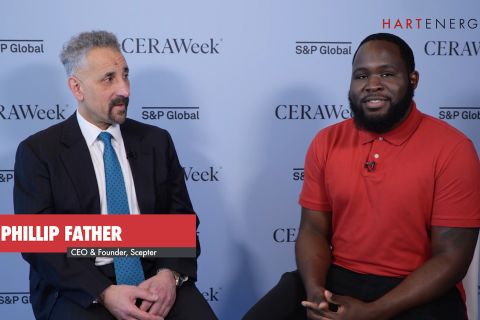?Recently, we had an unexpected day off around here because Tropical Storm Edouard was predicted to cause flooding in Houston. So, while at home watching TV, I came across that 1939 movie classic, Mr. Smith Goes to Washington. A very young, rail-thin and handsome Jimmy Stewart plays an idealistic and naïve freshman senator who single-handedly filibusters for hours against corruption, until he faints to the Senate chamber floor.
Sure, it’s an idealistic, almost fantasy, movie. The film was nominated for 12 Oscars including best picture, director and actor, and won for best screenplay.
The idealism, in contrast to what’s going on in Congress today, was a shock. I saw it just a couple days after some of today’s House Republicans were speaking on energy to an empty chamber. C-SPAN was not filming, the lights and microphones were turned off, and most members were long gone, it being the August recess.
Contrast these two political scenes with a third—the passion of the Mexican Senate chambers, where, for several days in April, the opposition party seized the podium and would not let other members in or out of the building, as they, too, fought for their beliefs on energy. (For more on this, see the article in this issue.)
Four-dollar gasoline has stirred up a lot of passion in the U.S. We should be thankful for it, because our industry has finally gotten the full attention of the public and Congress in a way no amount of studies, speeches, lobbying and pleading has done in 50 years.
Yes, energy is ON the agenda. Congress, Nancy Pelosi, the Gang of 10, Obama and McCain, the pundits and all, are proposing all kinds of energy answers—mostly wrong. But, they are also answering the wrong question. The question is not how to get $4 gasoline to fall back to $2.50, much as we might like that to happen.
The real question is, and must be, how will we have enough energy—at any price and from any source—to continue to run this country as we have come to know and expect? We will need oil and gas for a while yet, until we cross the bridge to the alternatives and can make these widely available, economic and scalable to meet our vast daily energy needs.
Natural gas is part of the answer. U.S. onshore production grew about 3.5% in 2006 and another 5% last year. It is increasing still. Lower 48 gas output in May 2007 of 57 billion cubic feet per day has steadily risen, reaching 61.8 Bcf a day in May 2008, the latest government data show.
Most second-quarter conference calls indicated the trend will continue. More than half of the increase in gas production between the first quarter of 2007 and the first quarter of 2008 came from Texas, where supplies grew by an exceptionally high 15%. Wyoming gas production grew 9%, Oklahoma’s was up 6% and Louisiana’s was up 4%.
Chesapeake Energy chief executive officer and gas advocate Aubrey McClendon testified in Congress right before the break that, according to Navigant Consulting, there is much, much more shale gas and other tight gas to come. Trillions and trillions.
At the same time, Morgan Stanley analyst Stephen I. Richardson said in a research note that the sustainability of recent growth in U.S. gas production, and the outlook for 2009 production, is the biggest debate in the market today.
If one believes in rising production, then one is bearish on price. Indeed, gas prices had plunged below $9 at press time, dangerously close to the breakeven for some shale and other tight-gas plays.
“As reflected in the recent performance of natural-gas-levered equities, the market has adopted a bearish outlook, in our view,” Richardson said. “We remain constructive, based on the current futures outlook, compared with the marginal cost of production at about $9 per Mcf today (further confirmed by producers during second-quarter conference calls) and an expectation of a moderation of growth trends during second-half 2008 due to more challenging year-over-year comps, and the impact of one-time additions.”
He noted that significant gas producers such as Chesapeake and EOG Resources, during their earnings calls, were quick to put recent growth trends into context—and to challenge the worry of a materially oversupplied 2009 North American gas market.
The real challenge is building gas infrastructure in the right basins, to move increased production from supply centers to markets. Already the Rex pipeline in the Rockies is full and the basis has widened again. (See an analysis in this issue.)
Meanwhile, DCP Midstream Partners LP just announced plans for its Haynesville Connector, which would go from western DeSoto Parish and extend 150 miles to Delhi, Louisiana, providing access to eight other takeaway pipelines in the Delhi area. If built, it would begin deliveries in third-quarter 2009 and would offer an estimated 1.5 Bcf a day of Haynesville shale takeaway capacity by early 2010.
Recommended Reading
Qnergy Tackles Methane Venting Emissions
2024-03-13 - Pneumatic controllers, powered by natural gas, account for a large part of the oil and gas industry’s methane emissions. Compressed air can change that, experts say.
MethaneSAT: EDF’s Eye in the Sky Targets E&P Emissions
2024-03-07 - The Environmental Defense Fund and Harvard University recently launched MethaneSAT, a satellite tracking methane emissions. The project’s primary target: oil and gas operators.
SEC Adopts Climate Disclosure Rules in 3-2 Vote
2024-03-06 - The regulation requires companies to disclose Scope 1 and 2 emissions, weather-related risks and other climate-related data that could have a material business impact.
Majority of Recent CO2 Emissions Linked to 57 Producers - Report
2024-04-03 - The world's top three CO2-emitting companies in the period were state-owned oil firm Saudi Aramco, Russia's state-owned energy giant Gazprom and state-owned producer Coal India, the report said.
Exclusive: Scepter CEO: Methane Emissions Detection Saves on Cost
2024-04-08 - Methane emissions detection saves on cost and "can pay for itself," Scepter CEO Phillip Father says in this Hart Energy exclusive interview.




